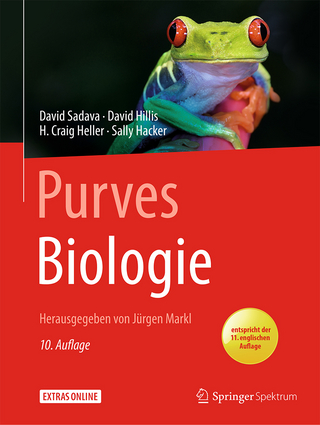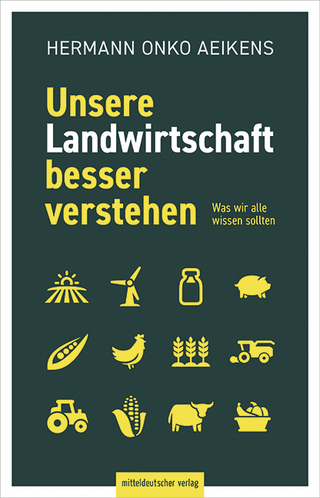
Planet Formation and Panspermia
Wiley-Scrivener (Verlag)
978-1-119-64039-4 (ISBN)
Panspermia is the concept that life can be passively transported through space on various bodies and seed, habitable planets and moons, which we are beginning to learn may exist in large numbers. It is an old idea, but not popular with those who prefer that life on Earth started on Earth, an alternative, also unproven hypothesis. This book updates the concept of panspermia in the light of new evidence on planet formation, molecular clouds, solar system motions, supernovae ejection mechanisms, etc. Thus, it is to be a book about newly understood prospects for the movement of life through space.
The novel approach presented in this book gives new insights into the panspermia theory and its connection with planetary formation and the evolution of galaxies. This offers a good starting point for future research proposals about exolife and a better perspective for empirical scrutiny of panspermia theory. Also, the key to understanding life in the universe is to understand that the planetary formation process is convolved with the evolution of stellar systems in their galactic environment. The book provides the synthesis of all these elements and gives the readers an up-to-date insight on how panspermia might fit into the big picture.
Audience
Given the intrinsic interdisciplinary nature of the panspermia hypothesis the book will have a wide audience across various scientific disciplines covering astronomy, biology, physics and chemistry. Apart from scientists, the book will appeal to engineers who are involved in planning and realization of future space missions.
Branislav Vukotić obtained his MSc. and PhD from the University of Belgrade, Serbia. He researches the astrobiological history of the Milky Way using probabilistic cellular automata and N-body simulations. He is a member of the Editorial Board of the Publications of the Astronomical Observatory of Belgrade and a vice-chair of the Management Board of the Astronomical Observatory in Belgrade. Joseph Seckbach earned his MSc. and PhD from the University of Chicago and did his postdoc at Caltech, Pasadena. CA. He is retired from the Hebrew University of Jerusalem and spent periods in research at the USA: UCLA, Harvard, Baton-Rouge (LSU); in Germany (Tübingen and Munich as an exchange scholar). He has edited a series of books “Cellular Origin, Life in Extreme Habitats and Astrobiology” and has over 40 edited volumes for various publishers as well as about 140 scientific articles. His interest is in astrobiology and iron in plants (phytoferritin). Richard Gordon is a theoretical biologist with a PhD in Chemical Physics from the University of Oregon, retired from the Department of Radiology, University of Manitoba in 2011. He is presently at the Gulf Specimen Marine Lab & Aquarium, Panacea, Florida and Adjunct Professor, C.S. Mott Center for Human Growth & Development, Department of Obstetrics & Gynecology, Wayne State University, Detroit Michigan. His interest in exobiology (now astrobiology) dates from 1960s undergraduate work on organic matter in the Orgueil meteorite with Edward Anders. He has published critical reviews of panspermia and the history of claims of life in meteorites.
Preface xi
Part I: Philosophical Aspects of Panspermia 1
1 “On the Origin of Life” 3
By Lord Kelvin (William Thomson)
2 Why We Should Take Interstellar Panspermia Seriously 7
Amedeo Balbi
2.1 Introduction 7
2.2 The Case for Interstellar Panspermia 8
2.3 Theoretical Consequences of Interstellar Panspermia 11
2.4 Conclusions 14
References 15
3 The Extended Continuity Thesis, Chronocentrism, and Directed Panspermia 19
Milan M. Ćirković
3.1 Introduction: The Continuity as a Pre-Requisite for Scientific Grounding of Astrobiology 20
3.2 Versions and Resistance 22
3.3 Cultural Evolution and Directed Panspermia 26
3.4 Conclusion and Prospects 34
Acknowledgements 36
References 37
4 Life in the Milky Way: The Panspermia Prospects 41
Branislav Vukotić and Richard Gordon
4.1 Introduction 41
4.2 Three Levels of Habitability and Panspermia 43
4.2.1 Stellar System Level 43
4.2.2 Galaxies: Cosmic Cradles of Life 45
4.2.3 Cosmological Level: Interactions of Galaxies 47
4.3 Conclusions 48
Acknowledgements 49
References 49
Part II: Microorganisms and Panspermia 53
5 Planetary Protection: Too Late 55
Margarita Safonova and C. Sivaram
5.1 Introduction 56
5.2 What is Planetary Protection 56
5.3 Extent of Earth Biosphere 60
5.4 Extension to Other Planetary Bodies 62
5.4.1 Moon 62
5.4.2 Mars 64
5.4.3 Icy Moons 66
5.5 Backward Contamination 66
5.6 Interplanetary Exchange 68
5.7 Habitable Conditions for Interplanetary Micronauts 71
5.8 Conclusion 74
Appendix A 77
Appendix B 78
Appendix C 78
Acknowledgments 81
References 82
6 Microbial Survival and Adaptation in Extreme Terrestrial Environments—The Case of the Dallol Geothermal Area in Ethiopia 93
Cavalazzi Barbara and Filippidou Sevasti
6.1 Introduction 94
6.2 Planetary Field Analog: The Case of the Dallol Geothermal Area 95
6.2.1 The Dallol Hot Springs 99
6.2.2 Dallol Geothermal Area Planetary Field Analogs 104
6.3 Life in Extreme Environments 105
6.4 Conclusion and Remarks on Panspermia 110
Acknowledgment 111
References 111
7 Escape From Planet Earth: From Directed Panspermia to Terraformation 119
Roy D. Sleator and Niall Smith
Acknowledgements 123
References 123
Part III: Formation and Evolution of Planets: Material Exchange Prospects 125
8 Catalyzed Lithopanspermia Through Disk Capture of Biologically Active Interstellar Material 127
Evgeni Grishin and Hagai B. Perets
8.1 Introduction 128
8.2 Capture of Interstellar Planetesimals 129
8.2.1 Planetesimal Size Distribution 129
8.2.2 Encounter Rates 130
8.2.3 Capture Condition 131
8.2.4 Capture Probability 133
8.2.5 Total Number of Captured Planetesimals 135
8.3 Catalyzed Lithopanspermia 137
8.3.1 Types of Panspermia 138
8.3.2 Fraction of Life-Bearing Rocks 139
8.3.3 Delivery Rates 140
8.4 Conclusion and Discussion 142
Acknowledgements 143
References 144
9 Lithopanspermia at the Center of Spiral Galaxies 149
Howard Chen
9.1 Introduction 150
9.2 The Kepler Transit Survey and the Distribution of Living Worlds 152
9.3 XUV Hydrodynamic Escape and the Formation of Habitable Evaporated Cores 153
9.3.1 Activity of Supermassive Black Holes 154
9.3.2 Overabundance of HECs Driven by Quasar Illumination 155
9.4 Frequency of Exchange in High Stellar Densities 157
9.4.1 Ejection of Planetary Bodies on Intragalactic Scales 158
9.4.2 Implications for Other Stellar Populations 160
9.5 Detecting Panspermia 162
9.6 Concluding Remarks 163
References 164
10 Wet Panspermia 171
Jaroslav Jiřik and Richard Gordon
10.1 Introduction 172
10.2 Earth and Its Isotopic World: Geological and Environmental Implications 172
10.3 Quest for the Primordial Water Worlds 173
10.4 Looking for the Biotic Traces in Extraterrestrial Material 176
10.5 Ices of the Moon and Proposal of Earth-Induced Wet Panspermia in the Solar System 178
10.6 Implications for Other Planets of the Inner Solar System? 182
10.7 Conclusions 185
References 186
11 There Were Plenty of Day/Night Cycles That Could Have Accelerated an Origin of Life on Earth, Without Requiring Panspermia 195
Richard Gordon and George Mikhailovsky
Acknowledgement 202
References 202
12 Micrometeoroids as Carriers of Organics: Modeling of the Atmospheric Entry and Chemical Decomposition of Sub-Millimeter Grains 207
G. Micca Longo and S. Longo
12.1 Micrometeorites and the Search for Life 208
12.2 White Soft Minerals 210
12.2.1 Carbonates in Space 211
12.2.2 Sulfates in Space 213
12.3 Atmospheric Entry Model 214
12.4 Results 219
12.4.1 Atmospheric Entry of MgCO3 Micrometeoroids 220
12.4.2 Atmospheric Entry of CaCO3 Micrometeoroids 223
12.4.3 Atmospheric Entry of FeCO3 Micrometeoroids 226
12.4.4 Atmospheric Entry of CaSO4 Micrometeoroids 229
12.5 The Role of Primordial Atmospheres 230
12.5.1 Isothermal Atmosphere Model 233
12.5.2 Hydrogen Atmosphere 237
12.5.3 Carbon Dioxide Atmosphere 239
12.5.4 Methane Atmosphere 239
12.6 Conclusions 241
References 243
13 Dynamical Evolution of Planetary Systems: Role of Planetesimals 251
Vladimir Došović
13.1 Introduction 251
13.2 Planetesimal Formation and Evolution 253
13.3 Transporting Mechanism in Later Stages of Planetary System Evolution 255
13.4 Conclusion 261
Acknowledgements 262
References 262
Part IV: Further Prospects 267
14 A Survey of Solar System and Galactic Objects With Pristine Surfaces That Record History and Perhaps Panspermia, With a Plan for Exploration 269
Branislav Vukotić and Richard Gordon
14.1 Introduction 269
14.1.1 Radiative Events 270
14.1.2 Solar Flares 271
14.1.2.1 Supernovae and Gamma-Ray Bursts 272
14.1.2.2 Galactic Shocks 272
14.1.2.3 Background Radiation From Galactic Sources 273
14.1.3 Collisions 273
14.1.4 Panspermia 275
14.2 Recording Properties 279
14.3 Pristine Potential of Solar System Bodies 281
14.3.1 Comets, Asteroids and Dwarf Planets 281
14.3.2 Mercury 283
14.3.3 Moon 283
14.3.4 Mars 283
14.3.5 Main Asteroid Belt 284
14.3.6 Jupiter and Saturn 285
14.3.7 Uranus and Neptune 286
14.3.8 Kuiper Belt 286
14.3.9 Oort Cloud 287
14.3.10 Meteorites 287
14.3.11 Extra-Solar Bodies 288
14.4 Prospects and Conclusions 288
Acknowledgements 289
References 289
15 The Panspermia Publications of Sir Fred Hoyle 309
Richard Gordon
Acknowledgements 316
References 316
Index 327
| Erscheinungsdatum | 02.11.2021 |
|---|---|
| Reihe/Serie | Astrobiology Perspectives on Life in the Universe |
| Sprache | englisch |
| Maße | 10 x 10 mm |
| Gewicht | 454 g |
| Themenwelt | Naturwissenschaften ► Biologie |
| Naturwissenschaften ► Physik / Astronomie | |
| ISBN-10 | 1-119-64039-3 / 1119640393 |
| ISBN-13 | 978-1-119-64039-4 / 9781119640394 |
| Zustand | Neuware |
| Haben Sie eine Frage zum Produkt? |
aus dem Bereich


